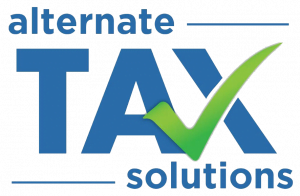How New Tax Proposals Will Affect Your Business
The U.S. House Ways and Means Committee has issued a bill known as the “Build Back Better Act” which seeks to further President Biden’s tax and spending agenda. As it stands, the bill has yet to be brought onto the house floor for a vote and will most likely undergo multiple rounds of revisions and markups. While there is no way to foretell where the final details will fall, the initial text can provide insights into key themes that House Democrats and the President are looking to accomplish. ATS has prepared a high-level analysis of these themes. This analysis may be helpful for small to mid-size business owners seeking to develop strategies that maintain cash flow and preserve wealth.
Build Back Better Act Overview:
As it stands, the Build Back Better Act (“BBBA”) seeks to increase top marginal rates on several different tax categories. It should be noted that these increases will be marketed as a tax hike that only affect the rich; however, the threshold for “rich” appears to be $400,000 (MFJ). This means owners of successful small businesses or individuals looking to sell appreciated investments in the next few years may find themselves subject to higher-than-expected tax rates. Below is a breakdown of some of the proposed tax code changes:
Tax Item |
Existing Policy |
New Policy |
|
Individual Income |
Top marginal rate 37% on $600,001 + income (MFJ) $500,001 + (S) |
39.6% on $450,000 + income (MFJ), $250,000 (S) |
|
Corporate Income |
Flat rate of 21% |
· 18% on corps with income less than $400,000 · 21% on corps with income between $400,000 & $5 million · 26.5% on corps with income exceeding $5 million. |
|
Long Term Capital Gains Tax |
0%, 15%, 20% depending on income |
25% (follows same income thresholds as income tax) |
|
Net Investment Income Tax |
3.8% (limited to passive income) |
3.8% applies to active income from a business for taxpayers with $500,000 + AGI (MFJ), $400,000 + (S) |
|
Surcharge Tax |
None |
3% on all income over $5 million for individuals, trusts, and estates |
|
Qualified Business Income (QBI) Deduction |
20% deduction on QBI (no limitation) |
Limit QBI deduction to $500,000 (MFJ), $400,000 (S), $50,000 for estates and trusts |
MFJ: Married Filing Jointly S: Single Filer
Other Notables:
Amortization of R&D Costs:
The BBBA pushes the requirement for businesses to amortize all R&D expenses beginning in 2022 to 1/1/2026.
Excess Business Loss Deductions:
EBL deductions were limited to $500,000 (MFJ) and $250,000 (S) per year under the TCJA. This provision was set to expire in 2025. The BBBA makes these provisions permanent.
Section 1202 Capital Gains:
Current tax law: Any gain from the sale of small business stock defined by Section 1202 and acquired after September 27, 2010, is 100% excluded from federal tax. The BBBA would limit this exclusion to 50% for taxpayers with income over $400,000 (including estates and trusts).
IRS Increase in Funding:
The BBBA seeks an increase of about $80 billion in funding for the IRS to force an increase in enforcement and a modernization of technology.
ATS Takeaways:
While the BBBA contains numerous other tax provisions, ATS believes that the proposals stated above will most impact individuals who own and operate businesses or hold investments that would generate a large capital gain. If income from your W-2, business, and investments exceed $400,000; your tax rate may be increasing from 37% to 43.4% before adding on state taxes. Additionally, the limitation on excess business loss deductions and qualified business income deductions may result in higher-than-expected net income, which will be subject to new higher tax rates.
Tax rate hikes and business deduction limitations have a direct effect on cash flow for the high-net-worth individuals, trusts, estates, and businesses subject to these changes. However, all taxpayers and businesses should plan to deal with the potential second and third-order consequences of the BBBA. Policy analysts have projected that the bill will increase net tax revenue by $1.06 trillion over the next decade. However, models also show the bill will lead to a .98% contraction of GDP, a .68% drop in wages, and a net loss of over 300,000 full-time jobs.
A new effort to collect revenue through a bolstered IRS will also increase audits for corporations, partnerships, and high-income earners. This puts even more emphasis on the need for taxpayers to carefully document all tax positions taken and to maintain that documentation for at least three years.
The general theme of this legislation expresses a desire to further increase the tax revenues collected from earners in the top income strata. This will be done through the following strategies:
- Increase top marginal tax rates
- Decrease the income thresholds for the top tax bracket
- Increase taxes on investment and capital gains
- Decrease or limit deductions
- Increase IRS enforcement
Fortunately, the tax code contains provisions that can help individuals and businesses affected by these proposed tax changes. Individuals who are thinking of selling a business or an appreciated asset or those planning their estate should carefully consider all options and consult with tax professionals. Businesses and business owners can also continue to take advantage of codified tax strategies to reduce liability and maintain cash flow.
For more information or to discuss the potential effects of tax reform please contact Alternate Tax Solutions.
This article is written as an analysis of proposed changes in tax law and is not intended to give any tax advice. Always consult with a CPA or tax advisor before taking any tax position.


